Biodiversity in Multiple Use Forests
In Metsähallitus’ forestry operations, safeguarding and promoting biodiversity are an essential principle on which we will not compromise.
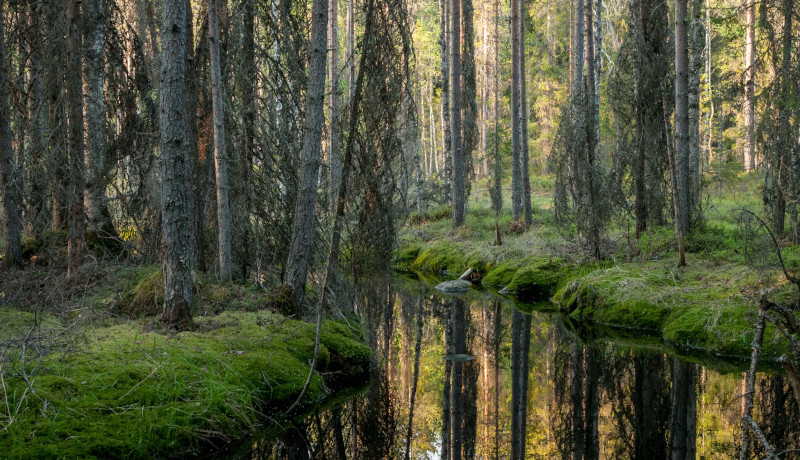
One of Metsähallitus’ strategic environmental goals is halting biodiversity loss on state-owned lands. While protected areas are expanding, management of commercial forests remains the key to protecting forest biodiversity. The areas used for commercial forestry, or multiple-use forests, provide suitable habitats for most of our forest species.
Metsähallitus Forestry Ltd’s environmental management starts from evidence-based instructions and training and progresses through planning and implementation to monitoring the direct environmental impacts of various measures. The monitoring results are used to develop the activities following the principle of continuous improvement.
The instructions related to environmental perspectives in forest management are contained in the Environmental Guidelines, a manual for Metsähallitus’ personnel as well as contractors and their employees. An updated version of the Guidelines was published in 2022.
Under the new guidelines, deadwood is no longer harvested, more living retention trees are preserved, the number of game thickets is increased, and large-scale regeneration is not carried out in hiking areas.
Restricted forestry operations on valuable sites
The most important tool in fostering forest biodiversity is the ecological network. The ecological network on state-owned lands comprises nature reserves and the most valuable ecological and special sites in multiple-use forests as well as the ecological corridors connecting them, which allow plant and animal species to spread. Forestry operations are restricted in these areas, or they are excluded from commercial forestry use.
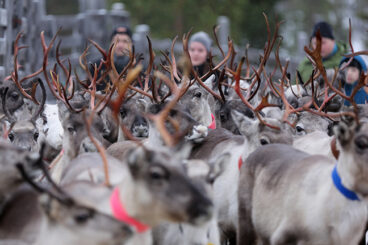
In addition to safeguarding biodiversity, another aim of landscape ecological planning is to safeguard possibilities for the multiple use of forests and pursuit of natural sources of livelihood. Consequently, the landscape ecological plans also cover game habitats, landscape values and cultural sites. In Northern Finland, the needs of reindeer husbandry are a high priority. Possibilities for recreational uses of nature are addressed especially in important tourism areas.
Valuable sites in the ecological network include herb-rich forests and broadleaf groves, old-growth forests and heathland forests with plenty of deadwood, sun-lit and heritage environments, exposed bedrock and cliffs, nutrient-rich mires as well as biotopes close to small water bodies, such as springs and streams, intermittent streams and ponds. Some of these valuable habitats are designated sites under the Forest Act and the Nature Conservation Act.
Explore the ecological network by Excursionmap
To find out about sites in the landscape ecological network, go to the web service Excursionmap.fi.
This service displays the locations of state-owned multiple-use forests and their special sites as a dedicated map layer. The service shows ecological and other special sites, including landscape and hiking areas, which have been excluded from forestry operations as well as other sites whose special features need to be addressed.
To display the attractions in multiple-use forests, such as cultural heritage sites and natural monuments, use the sightseeing destinations menu.
Active environmental management
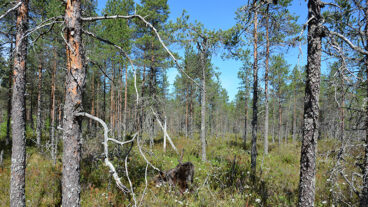
Forestry Ltd safeguards biodiversity in multiple-use forests by actively managing important habitats. Environmental management tasks are planned and carried out cost-effectively in connection with other forestry work and planning, focusing on the most valuable sites in terms of biodiversity.
Active habitat management measures include prescribed burning, burning of retention tree groups, mire and stream restoration, removal of barriers to fish migration in watercourses, control of invasive alien species as well as management of sun-lit sites and herb-rich forests.
Key policies in environmental management
Retention trees and deadwood
Many endangered forest species depend on deadwood. Retention trees are preserved to secure a sufficient supply of deadwood in future stages of forest succession. Retention trees are also highly significant for the landscape.
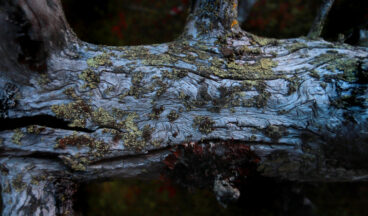
Exceptionally large-diameter trees, prominent individuals and cavity trees are always preserved. Sturdy broadleaves, in particular large aspens and goat willows, are the preferred species in retention tree groups. Large-diameter pine trees are also important as retention trees that provide potential nesting sites for large birds of prey.
Following the updated Environmental Guidelines, deadwood is always left unharvested.
Game habitats
Forests in commercial use are important hunting grounds for which tens of thousands of hunting permits are sold every year.
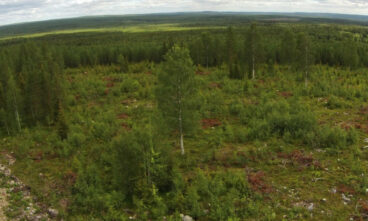
Game habitat management reconciles the needs of forestry and game management. By means of forest management, multiple-use forests can be maintained and improved as good game habitats. The aim is to protect the living conditions of game animals, ensuring that their populations remain viable and numerous enough for sustainable hunting.
Game animals roam across large areas and need different habitats and food sources as the seasons change. The most effective game management method with the most enduring impacts thus is preserving, restoring and creating habitats.
Preserving forest cover is essential in all management measures. Small-scale fellings are thus preferred in game areas. ‘Controlled non-management’ is practised in caring for young stands and thinning: rather than clearing seedling stands and young stands too thoroughly, only saplings that hamper the growth of valuable trees are removed.
Capercaillie and other game animals
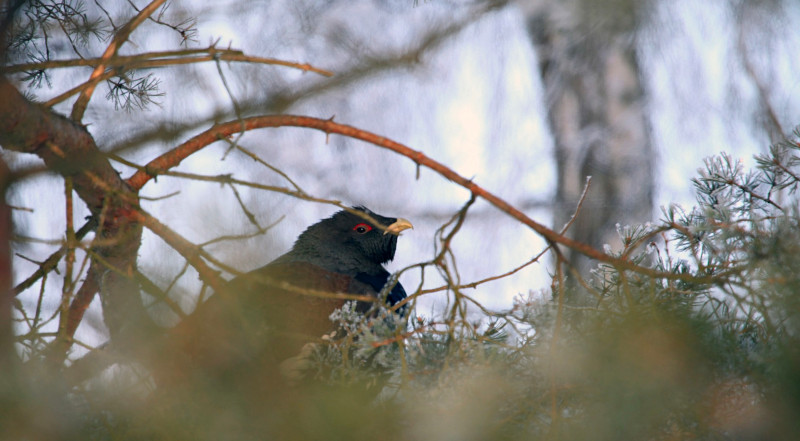
The capercaillie is one of the most important species in terms of environmental management in multiple use forests. Consequently, managing capercaillie courtship sites plays a special role in game habitat management, and Metsähallitus has provided specific guidelines for it.
Ecological restoration
Many environmental management measures are carried out in cooperation by Forestry Ltd and Parks & Wildlife Finland, and frequently also with other actors.
Parks & Wildlife Finland is responsible for the conservation, restoration, management and monitoring of habitats in the protected areas. Habitat restoration includes various measures to help ecosystems return to their natural state.
Read more about ecological restoration of forests and habitats.
While the capercaillie prefers mature woods, it does not necessarily demand old-growth forest as it can also thrive in regenerated areas. Variation in tree density and a sufficient shrub layer are vital structural characteristics of the forest for the capercaillie.
At landscape level, continuous forest cover is an important factor for this species. The annual living area of one individual may comprise hundreds of hectares. The capercaillie needs divers habitats in different stages of its annual cycle.These habitats can be protected by means of various felling and forest management methods.
Black grouse habitat is improved by favouring groups of broadleaf trees in open environments, ensuring good winter feeding for the birds. The hazel grouse lives in dense forest environments in which especially alders have been spared, whereas the elk and hare populations have increased in almost all parts of Finland along with young forests.
Water protection
Forestry operations may result in both nutrient leaching and solids runoff from soil into water bodies. Careful planning can, however, help to reduce essentially the harm caused to water bodies by ditch network maintenance and soil preparation.
In forestry, water protection is taken into consideration in fellings, soil preparation, ditch maintenance, fertilisation and forest road construction. Metsähallitus has not drained new areas since 1994.
In the planning of water protection, methods based on geographic data sets are becoming more widespread. GIS-based watershed analyses are used to estimate the runoff and nutrient load and to assess the effect of water protection measures.
On and around water bodies, a sufficiently wide buffer zone of 5 to 30 metres is always left in connection with felling and site preparation. Vegetation in the buffer zone binds leached nutrients and prevents solids from being washed into the water system. It also protects shoreline landscapes and the microclimate of small water bodies.
Regulation of water flows by means of different structures of the ditch network is an essential part of water protection in forestry. For best results in the settling of water, overland flow fields are used whenever possible. In special situations, dams or wetlands can be built.